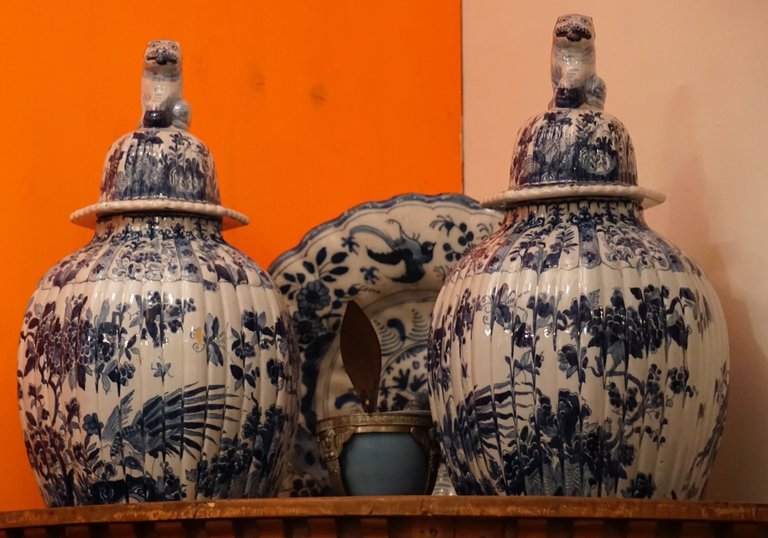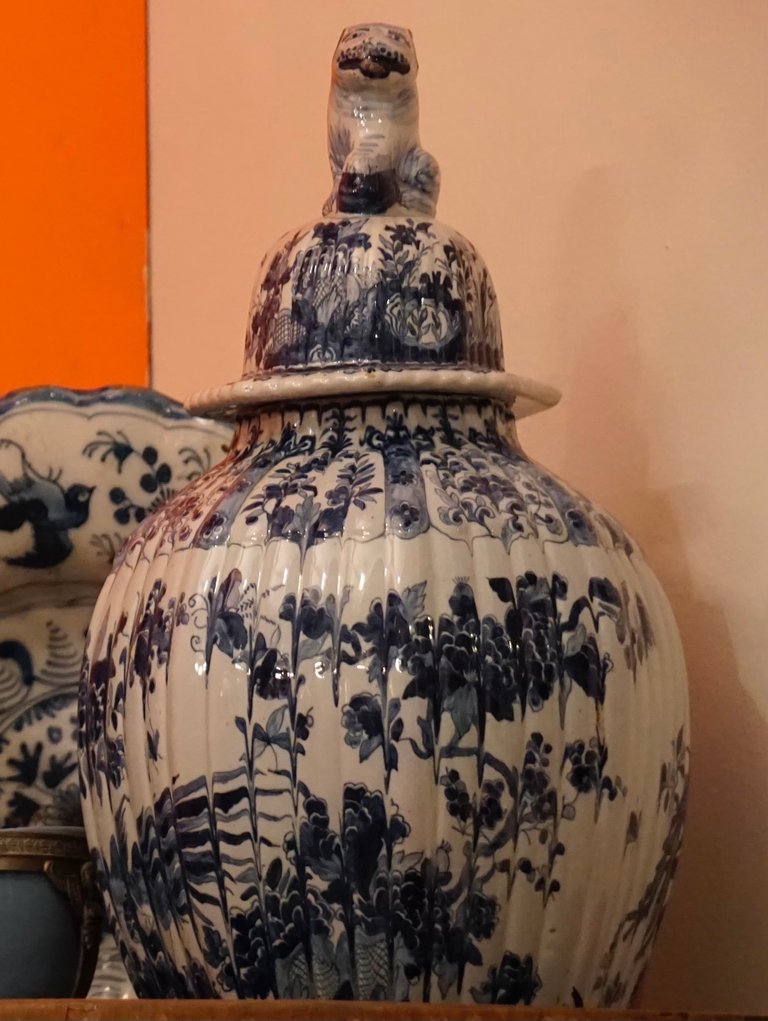History of Porcelain
Hey dear Hiveans, welcome to my new post and I hope you had a day full of positive experiences! Today I would like to go into a little bit about art history and hope you are able to expand your knowledge a little.

You can see here some wonderful porcelain works of art and the origin of this art form is old China where it was already known during the 7th century and at that time it was still a very mysterious topic and the exact recipe of the production was kept secret. From China, it also popularised itself in other Asian countries during the Tang Dynasty and it came to the fact that this luxury item was also exported to Japan and more and more methods for production were tested and it was particularly popular in noble circles and was considered an important gift at festivities. Porcelain quickly spread and it also reached European countries over time, but the Chinese still kept the recipe for the production secret and at first it still had to be imported via detours and even if many tried, no one managed to reveal the secret. One of the first discoverers who had brought porcelain to Europe was the Italian explorer Marco Polo (1254 - 1324) who became particularly famous for his travels to China and on his return he brought some pieces back to Venice and also the name as we know it today spread from Italy. In Europe, his discovery became more and more popular and numerous kings were so enthusiastic and here too, it was reserved for noble families and was considered a status object and the trade from China to Europe flourished strongly, especially during the Ming Dynasty, which created an unmistakable style and were known for a variety of paintings of the works. In Europe, the product was very popular at the time and more people wanted to have something of porcelain that the market grew more and more and numerous different variants were created and many traders were needed for transport, which ensured that the market prices exploded temporarily and in the 15th century, new trade routes via India were discovered, which ensured that other European sea powers such as the Netherlands, England or France entered trade. Furthermore, the Europeans tried to make themselves independent of China and make their own porcelain, but no one could unravel the secret and only at the beginning of the 18th century century, the secret was revealed and more and more new production facilities were built and much porcelain was produced in Europe. At the beginning, most porcelain had still been produced by hand and with the advent of new technologies also machines were used for the production of porcelain and over the centuries prices also fell more and more.

Thanks a lot for stopping by and I hope you could learn something new about art history! I captured these pictures with my Camera Sony Alpha 6000 plus 55-210 mm lens!
Very beautiful print. In older pots, I have seen this type of work.
Good to know that you are already familiar with porcelain works.
These is really a beautiful art work been crafted out
True :)
Beautiful. Nice work
It’s nice that you are also interested in this art form!
This is really looking so beautiful and well crafted I must confess
That’s true and the history of this art form is really unique.
https://twitter.com/WayShola84156/status/1765823814716272947?t=AKoL4QI8HHRVQd5pblak0w&s=19